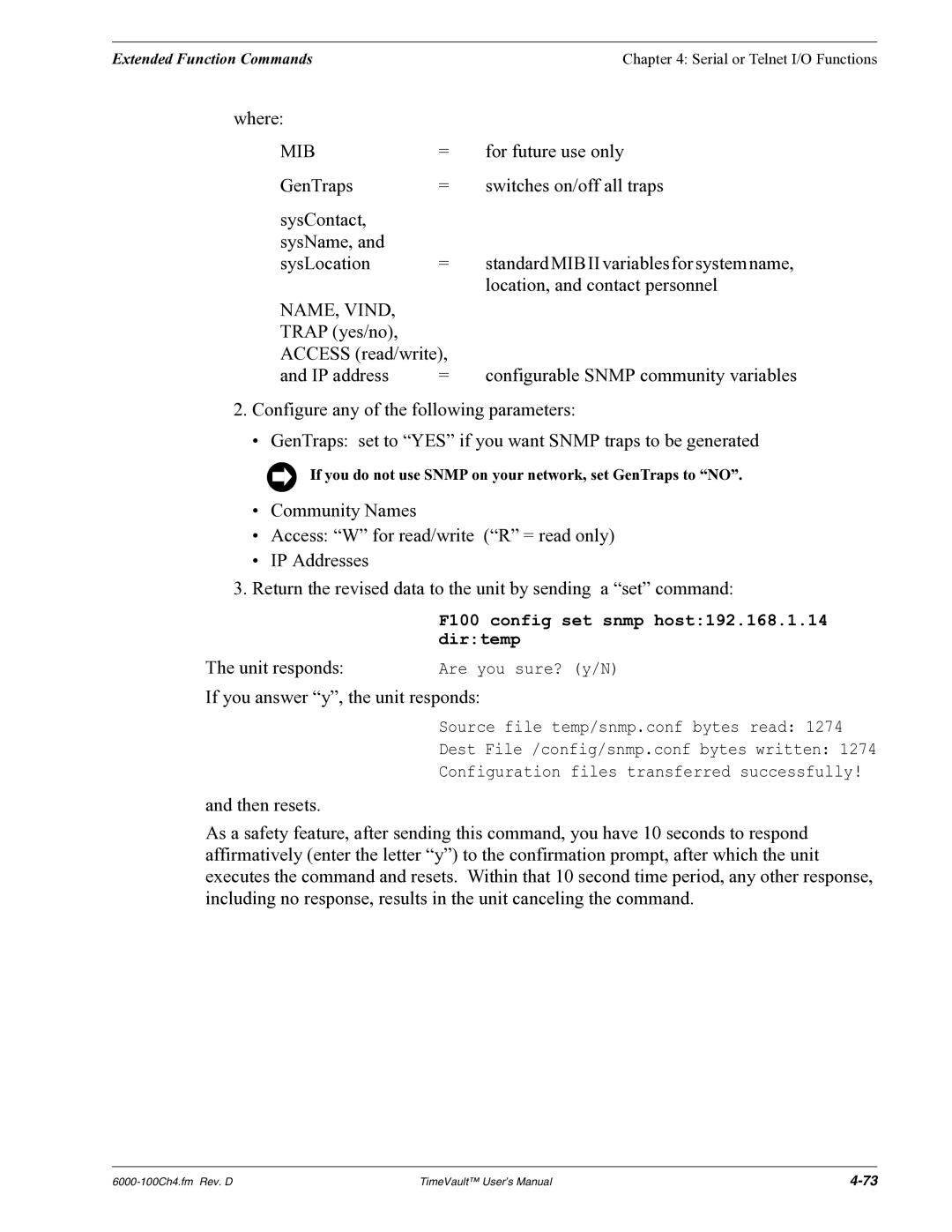
Extended Function Commands | Chapter 4: Serial or Telnet I/O Functions |
where: |
|
|
MIB | = | for future use only |
GenTraps | = | switches on/off all traps |
sysContact, |
|
|
sysName, and |
|
|
sysLocation | = | standardMIBIIvariablesforsystemname, |
|
| location, and contact personnel |
NAME, VIND, |
|
|
TRAP (yes/no), |
|
|
ACCESS (read/write), |
| |
and IP address | = | configurable SNMP community variables |
2.Configure any of the following parameters:
• GenTraps: set to “YES” if you want SNMP traps to be generated
If you do not use SNMP on your network, set GenTraps to “NO”.
•Community Names
•Access: “W” for read/write (“R” = read only)
•IP Addresses
3.Return the revised data to the unit by sending a “set” command:
| F100 config set snmp host:192.168.1.14 |
The unit responds: | dir:temp |
Are you sure? (y/N) |
If you answer “y”, the unit responds:
Source file temp/snmp.conf bytes read: 1274
Dest File /config/snmp.conf bytes written: 1274
Configuration files transferred successfully!
and then resets.
As a safety feature, after sending this command, you have 10 seconds to respond affirmatively (enter the letter “y”) to the confirmation prompt, after which the unit executes the command and resets. Within that 10 second time period, any other response, including no response, results in the unit canceling the command.
TimeVault™ User’s Manual |
